- About Latvia Facts about Latvia Practical information Brochures and maps Top 10 attractions
- Experience Regions Active holiday Architecture Culture Cities Events Nature Wellness For families with kids
- Discover Riga
- Eat&drink
- Where to stay
- Trip planner

Search in Latvia
Choose your language.
The city, with Dinaburgas Castle at its centre, was founded by the Livonian Order, but it had been ruled over by Poles, Swedes, Russians and Germans. History has left its mark on Daugavpils in its architecture, the diversity of its residents, and its culture. Get to know Daugavpils by visiting these sights!
Daugavpils Fortress
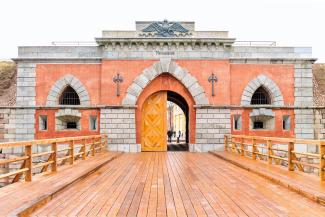
Daugavpils Fortress is a significant cultural and historical object, which covers an area of 2 km2.
It has a centuries-old history, which can especially be felt in the Museum of World War I. But you can also discover Daugavpils Fortress under the cover of night together with the representatives of Daugavpils Bat Centre.
Daugavpils Mark Rothko Art Centre
Mark Rothko Art Center
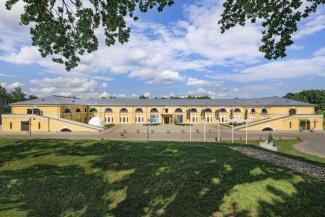
Daugavpils Mark Rothko Art Centre is the only place in Eastern Europe where it is possible to see the painter's original works. It is an international art complex located in a historical place - Daugavpils Fortress.
Church Hill
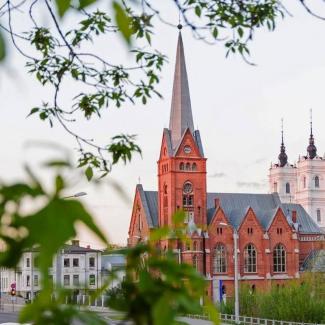
A place where four churches stand side by side. Each of them represents a different denomination, but together they create a truly fantastic architectural ensemble.
Latgale Zoo
Latgale ZOO

Various exotic animals live in the exposition and laboratory of Latgale Zoo: iguanas, meerkats, monkeys, pythons, crocodiles, turtles, scorpions and other residents of tropical forests and Latvian landscapes. Anyone interested in the exposition can see the animals, as well as book a tour.
Šmakovka Museum
The biggest Šmakovka museum in Latvia, that offers a modern and appealing story about this strong drink of Latgale, as well as a tasting at the end of the tour.
Daugavpils Lead Shot Factory
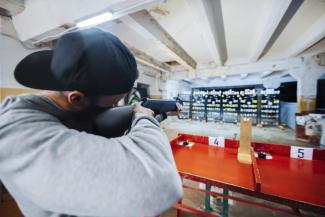
In Daugavpils lead shot factory you will feel the unique industrial atmosphere of the 19th century in the historical lead shot casting workshop and learn how ammunition is produced. You will be able to climb the lead shot casting tower and test the ready production at the factory's shooting-gallery.
Daugavpils Centre
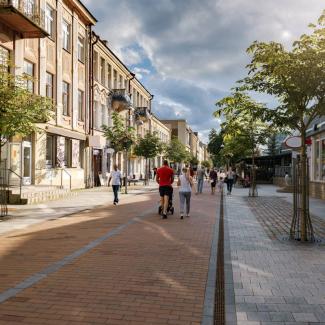
The attractive aura of the Daugavpils centre is created by architecture and parks that have preserved the city's history. Take a walk along the pedestrian Rīgas iela and see for yourself.
Daugavpils Innovation Centre
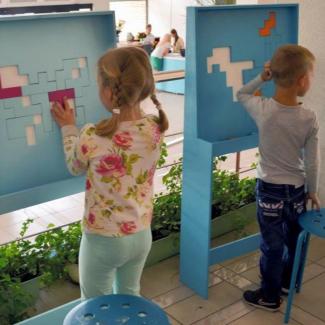
Curiosity is the path to knowledge, but knowledge explains miracles. Daugavpils Innovation Centre is an interactive exposition based on the principles of physics, as well as a large active area for children.
Daugavpils Clay Art Centre
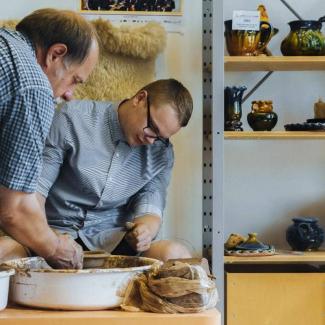
The centre offers an opportunity to get acquainted with the cultural heritage of Latgale - ceramics and pottery traditions, to get involved in the working process, to see exhibitions and to learn the secrets of the craft.
Adventure Park “Daugavpils Tarzāns”
Daugavpils Tarzāns Adventure Park
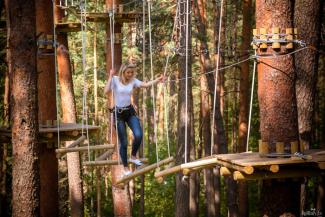
Have active recreation in the adventure park “Daugavpils Tarzāns”, where various obstacle tracks are available for both children and adults.
Location and sights nearby
Daugavpils of Latvia
Daugavpils, Latvia: What to See, Where to Go, What to Know
Uniquely, ethnic Latvians make up only 20% of the population here, making the city seem distant and disloyal to many Latvians. Russian is the lingua franca of Daugavpils. While the city is ethnically diverse (Russians – 54%, Poles – 14%, Belarusians – 7%, Ukrainians – 2%) the Soviet Russification drive has ensured that even to most non-Russian locals Russian is also the native tongue.
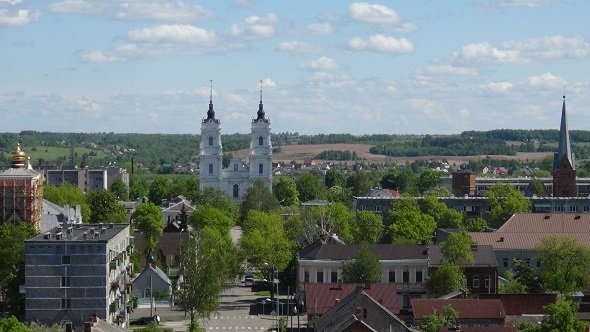
Daugavpils became a large city after Russian Empire has developed a massive fortress here (1810-1876) as well as laid primary Saint Petersburg-Warsaw road (1834) and railroad (1860) through the city. While the regular Downtown street grid dates to that era of rapid growth, many of the buildings are newer as the city was devastated during World War 2 and subsequent Soviet regime.
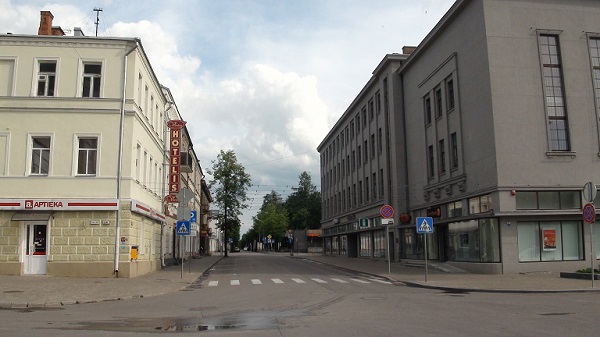
Daugavpils Downtown is where the shopping, restaurants, and nightlife are concentrated, but the most iconic districts lie beyond it. These are the Fortress (Cietoksnis) , which is now inhabited, and the Churches Hill area where churches of 4 Christian denominations stand side by side, signifying Daugavpils’s and Latgale’s multi-religious history. The nearby Varšavas street has some pretty villas that miraculously survived World War 2 bombings.
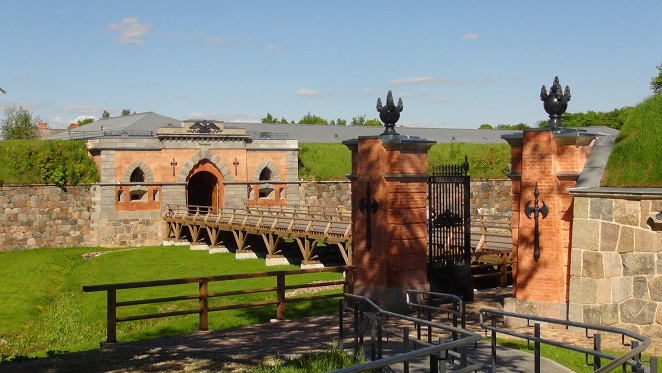
While Daugavpils is somewhat infamous as poor, these days it looks much better than it did a decade ago.
Loading map...
Share this:

Daugavpils Downtown
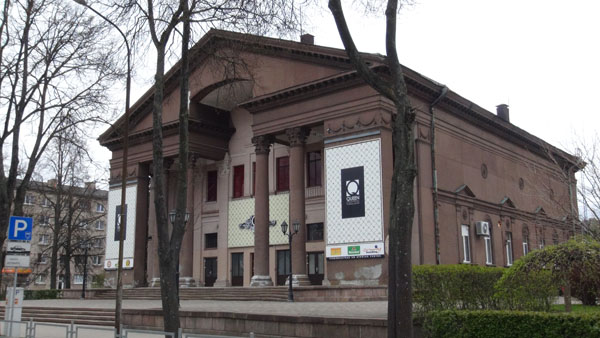
Finding shopping, nightlife and accommodation opportunities is the easiest here, and access to most sights beyond downtown is also trivial. Daugavpils train and bus stations are both located in the downtown. Unlike many Western cities, the main malls of Daugavpils are right at its center.
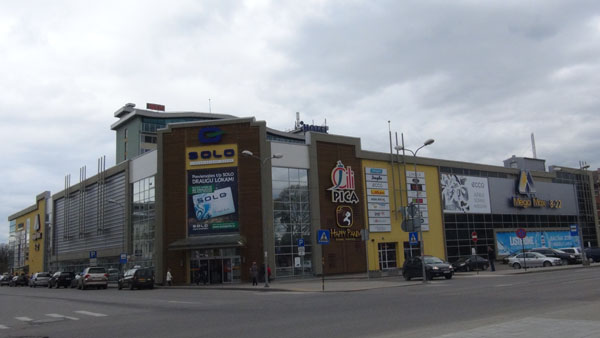
While many old buildings have been demolished and replaced by nondescript Soviet parks or boring new edifices, many still remain to be found while exploring Daugavpils streets. The city is especially famous for its red brick edifices where bricks are formed into ornaments to beautify facades.
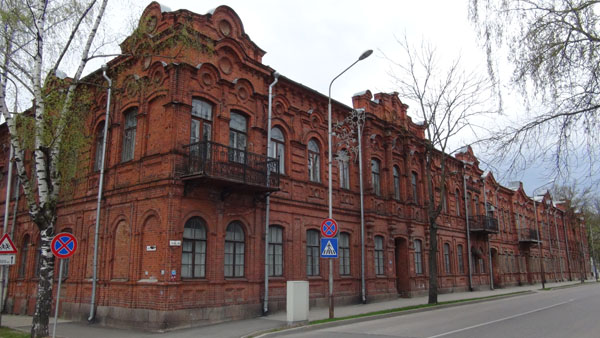
The heart of Downtown Daugavpils is the Unity Square which hosts an art deco Unity House (1937; a project of interwar Latvia), the theater and a Latvian home museum of pre-modern handicrafts.
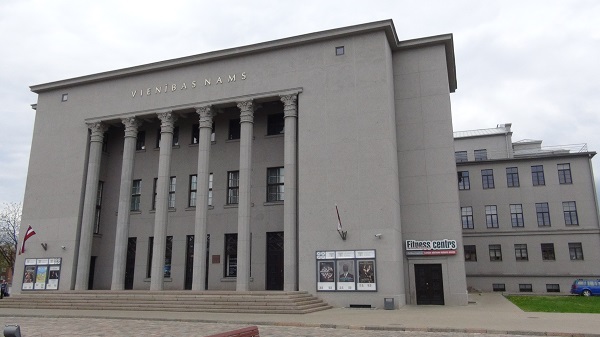
Downtown Daugavpils also have multiple houses of worship from the pre-WW2 era, though they are small as the city used to be religiously fragmented. These are the St. Peter Catholic Church (1934) and Synagogue (1850). The Russian Orthodox church has been imploded by the Soviets in 1969 and only a small chapel was rebuilt in its place after independence.
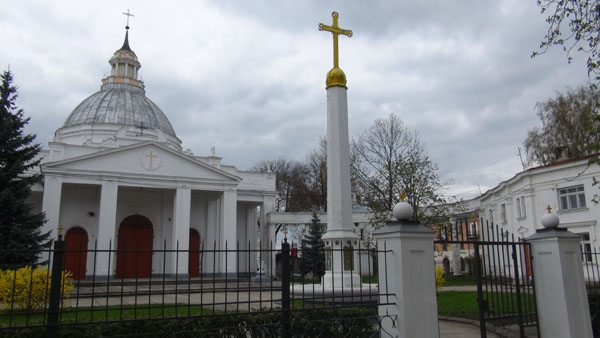
Two main parks of downtown Daugavpils are the Dubrovin park (laid in the 19th century and named after the mayor of the time) and Central Park (a larger one that includes sports facilities and an ice hockey hall nearby). Dubrovin park has a fountain, an old towered firefighters building and a Soviet WW2 memorial which is still welcome by primarily Russian Daugavpils residents.
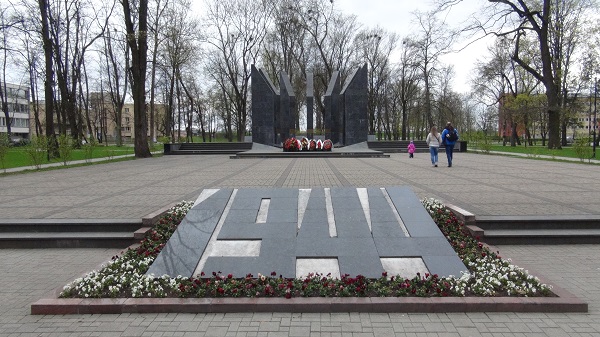
Daugavpils downtown also hosts a regional museum offering information on local fauna and cultural history,
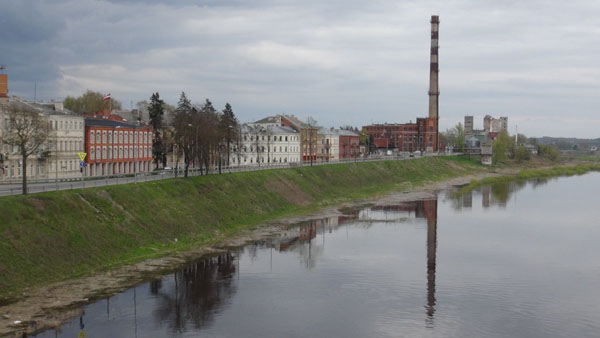
Churches hill and Varšavas street
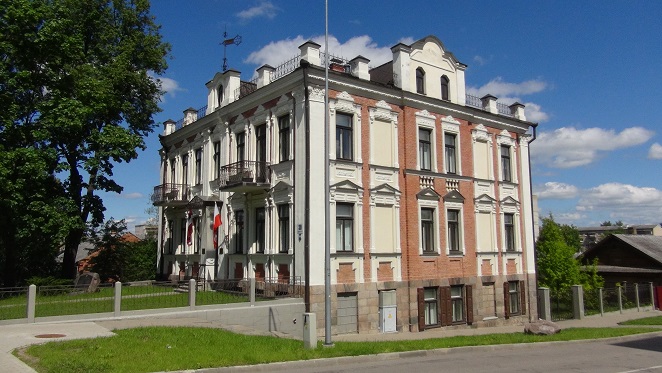
The Church Hill is crowned by historic houses of worship four different Christian denominations that stand side by side, signifying the multireligiousness of both Daugavpils and Latgale.
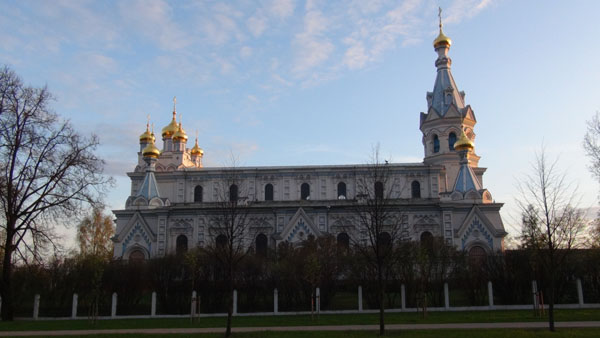
The churches are Lutheran Cathedral (1893), Roman Catholic Church of Blessed Virgin Mary (1905), SS Boris and Gleb Russian Orthodox Cathedral (1905; once a garrison church), Old Believer Church (1928).
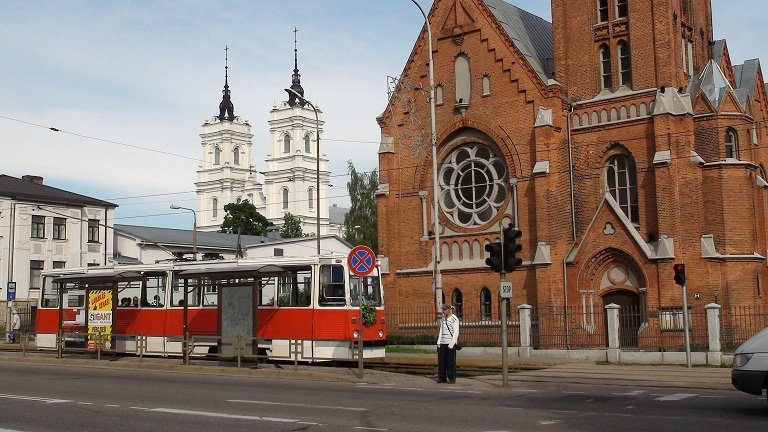
Nearby Varšavas street hosts multiple 19th-century villas and a lead shot factory with period technology saved by Soviet economic backwardness and now converted into a tourist-oriented place of industrial heritage, with regular guided excursions available every day.
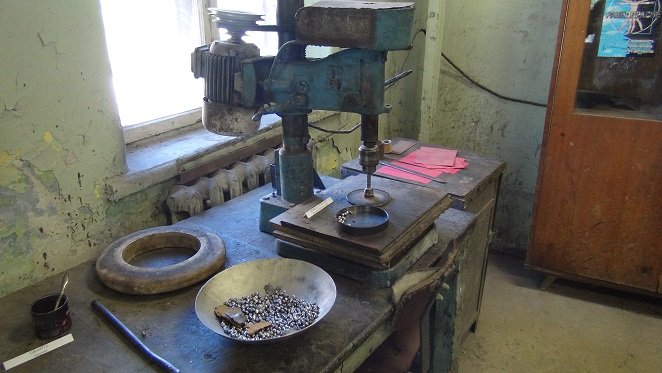
Between the churches and lead shot factory Varšavas street hosts a Russian culture center where information about various aspects of Daugavpils Russian culture are presented (Othodox and Old Believer faiths, Daugavpils fortress history).
Daugavpils Fortress (Cietoksnis)
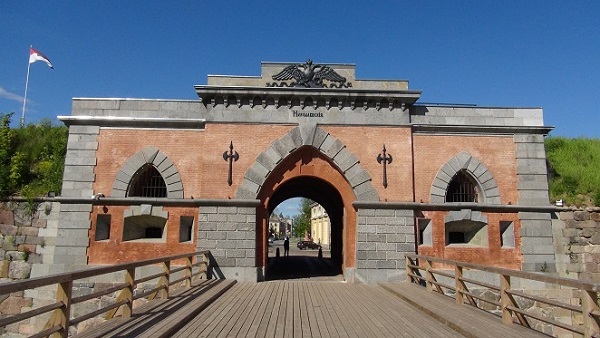
Commissioned after Napoleon’s invasions (1810) and expanded until 1878 the star fortress the importance of fortress went beyond just defending Russia from Western invasions. As Daugavpils was on both the road and railroad from Saint Petersburg to European capitals, the Fortress was also used by the Russian czars to spend a night.
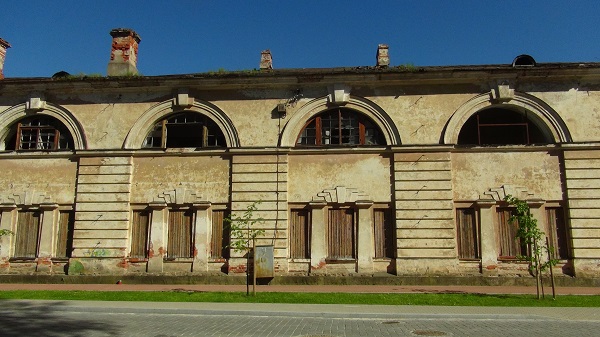
The former glory is somewhat ruined as the obsolete fortress was turned into apartment blocks. Many original buildings remain (some are abandoned), but Soviets also constructed their own plain apartment blocks in-between, which are no less shabby.
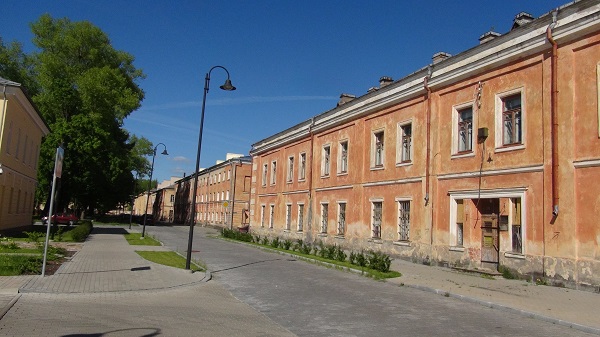
Fortifications themselves are of interest – they may be ascended. The Nicholas gate was restored, once again adorned by the Russian coat of arms.
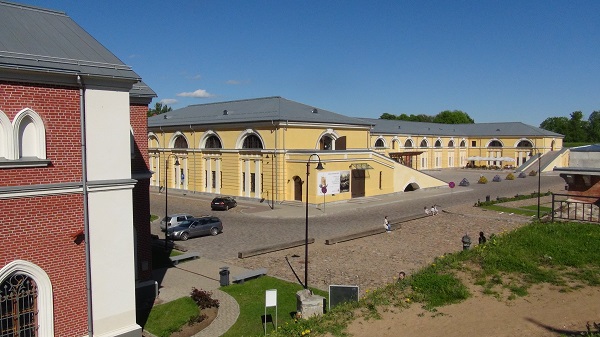
Other interesting locations include the Daugavpils fortress information center (near Mark Rothko museum) in a former Water Tower building, the buildings at the main park which includes former Fortress Commander office and a military hospital as well as the gates . Multiple monuments and graves exist in the area for warlords of various nationalities, however, they are not architecturally appealing.
Cietoksnis (Fortress) is located a couple kilometers west of downtown and may be accessed by bus.
A fortress cemetery located some 2 km northwest of the fortress is difficult to reach without a car or a longer hike. Few gravestones there are elaborate fortress era ones (with many new civilian burials and a section for WW2 Soviet soldiers). However, the cemetery is worth a visit primarily for its small Orthodox church of St. Alexander Nevskiy (1897), which boasts one of the most ornamental wooden facades in Latvia.
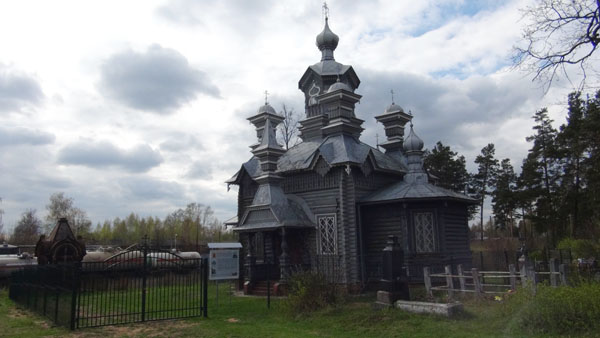
Grīva is mostly built up with private family homes. While those surrounding main streets are generally new, make a few turns and you may appear at what seems to be a 19th century suburb with old wooden homes and unpaved streets.
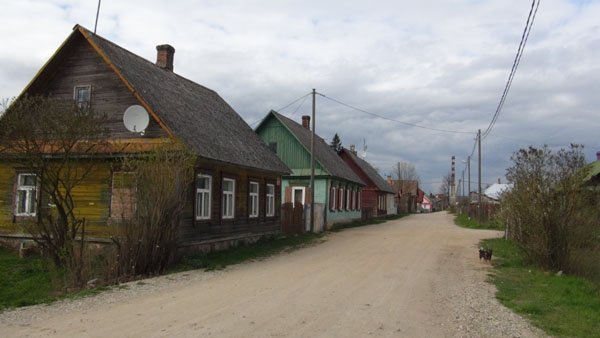
Built as a separate town, Grīva also has petite houses of worship of all the Latgale’s main denominations. Red brick Catholic Church of Blessed Virgin Mary (~1885) is the prettiest. Orthodox church is quite elaborate and interesting for the old wooden homes and atmosphere of 19th century that surrounds it. There are also two Old Believer churches as that community was traditionally especially numerous in Grīva.
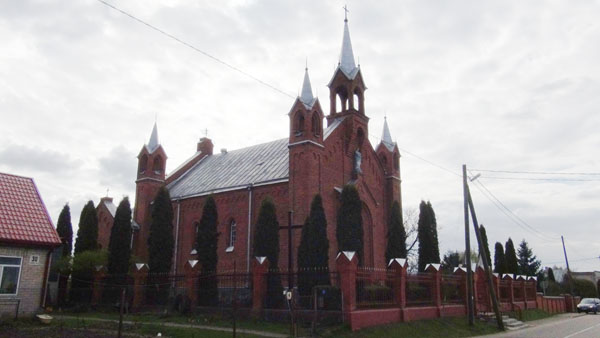
Grīva Fortress is a massive 19th century military installation on the oposite bank of Daugava from the Daugavpils fortress. Both fortreses were meant to function together. Unfortunately unlike its “brother fortress” the Grīva Fortress may not be visited as it houses a prison now. But this makes it seem just more mysterious and dark. A memorial stone in front of it commemorates that a Jewish ghetto was established there under Nazi German occupation.
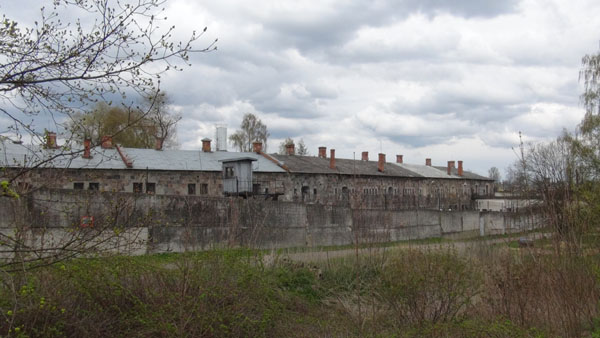
New Daugavpils
New Daugavpils is essentially made of multiple parts, three of them having the word “New” in their names.
Jaunbūve ( New buildings ) is the main part, consisting of Soviet apartment blocks. A major place of entertainment there is Lokomotiv stadium where the local speedway team plays its home games. Having some 10 thousand seats it is one of largest speedway-specific stadiums in Europe and has hosted world championship events.
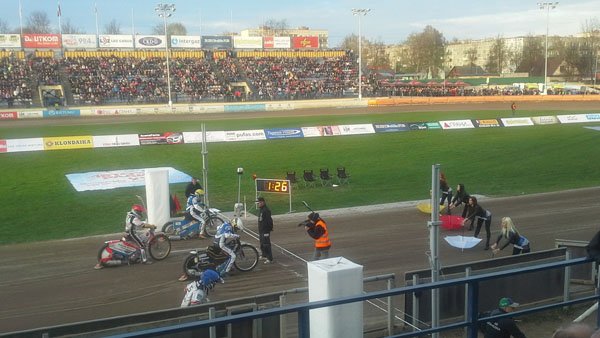
Forštate ( The Suburb ) beyond the railway consists of two areas. Old Suburb (Veca Forštate) mostly an area of private residential homes. Some are old and small, others are the “built for generations style” of the early 1990s. New Suburb (Jauna Forštate) consists of Soviet apartment blocks
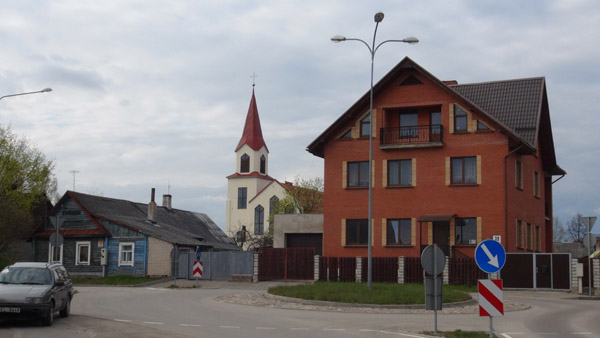
History of Daugavpils
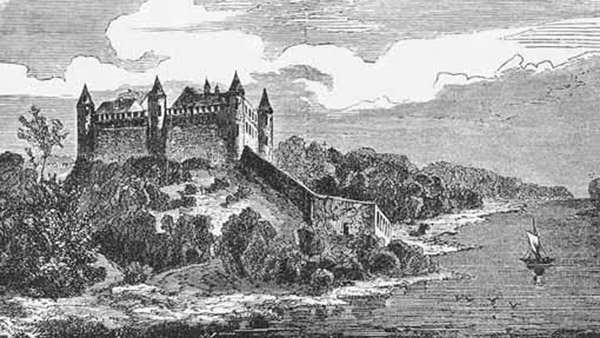
Russian Imperial Daugavpils and its end (1810-1944)
The first growth of Daugavpils took place under Russian Imperial regime when the Empire constructed a fortress here (1810-1878) while businessmen established industry in what was a major rail junction on Saint Petersburg-Warsaw line (laid in 1860).
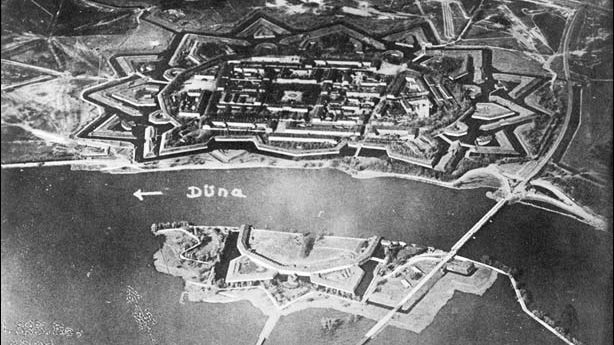
The city increased in size from 3000 in 1825 to 113000 in 1914 mainly because of migrants from the rest of Russian Empire. Many were Russians but even more were Jews as Daugavpils was one of the few Imperial cities where Jews were permitted to freely settle. As such, it has gained a Jewish plurality (47%).
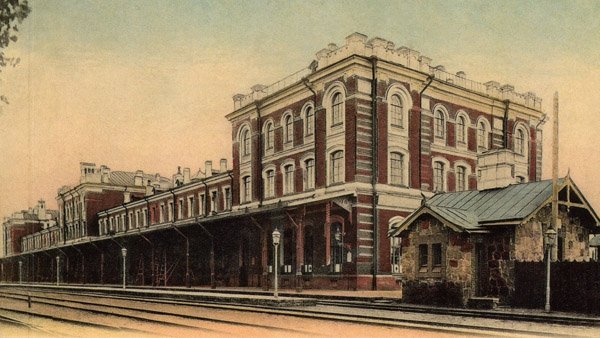
By 1897 merely 2% of locals were ethnic Latvians, surpassed also by Russian settlers (30%) and Poles (16%) who came from Latgalian towns (where they had strong communities since the area was ruled by Poland-Lithuania in 16th-18th centuries). Daugavpils downtown was built up with red brick buildings around straight streets, while each religious community erected its own temples, creating an iconic “Churches hill” where prayers would have resounded in a multitude of languages every day. Each ethnicity even had its own name for the city: to Russians, it was Dvinsk, to Jews – Dineburg.
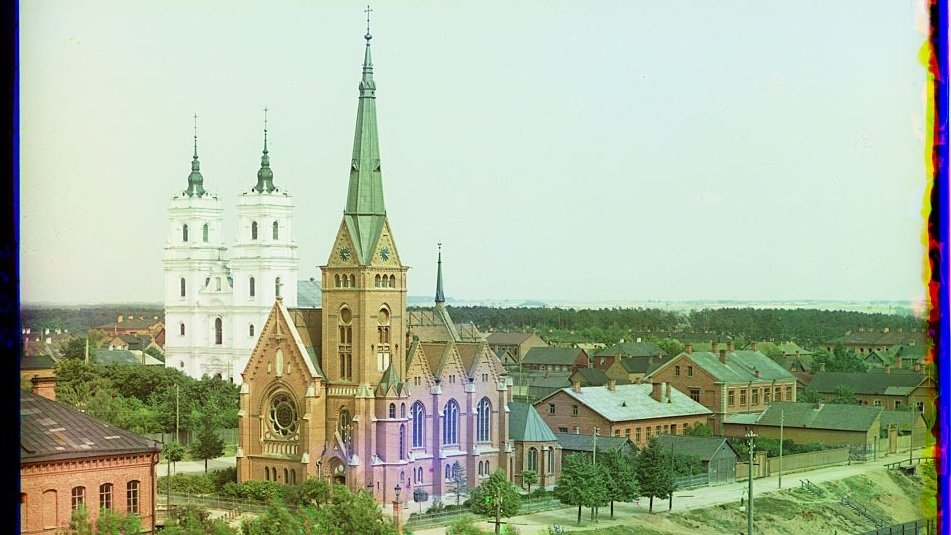
As a hub of Eastern Latvia, Daugavpils received a fair share of development, such as the massive Unity House with halls for theater and concerts.
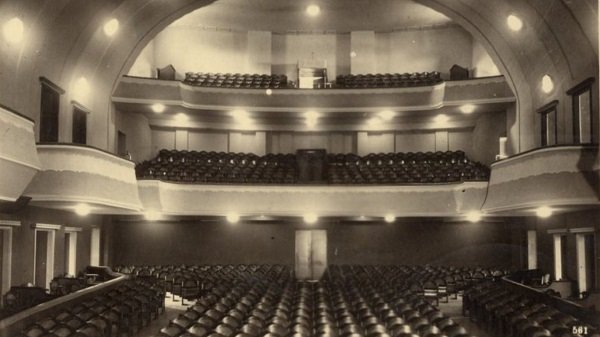
Perhaps Daugavpils would have been slowly transformed into a Latvian city but that was not to be. World War 2 occupations proved to be a major upheaval that put a final nail in the coffin of that 19th-century city, destroying the majority of its buildings and people. It is often claimed that by late 1940s merely 20000 people remained in the city, wiping out the population growth of past 70 years.
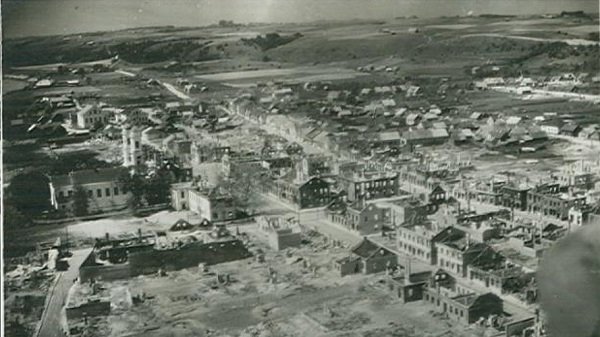
Soviet Daugavpils and its end (1944-)
In the place of old Daugavpils Soviets essentially constructed a new city after 1944. Historic Downtown buildings were often replaced by Soviet ones (Stalinist grandeur in the 1950s, shabby edifices later). Many former districts were turned into empty fields with propaganda sculptures.
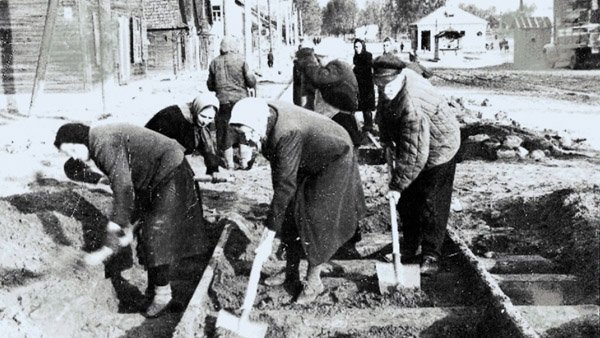
While the Polish community seemingly remained strong (18,4%) such strength was superficial. Like all the ethnic minorities of Soviet Latvia (Jews, Ukrainians, Belarusians), Poles of Daugavpils were slowly Russified. There was close to no media, education, culture or entertainment available in any language besides Russian, so parents ceased to teach their children the “useless” ethnic languages. By 1989 only about a quarter of these minorities still spoke “their own” languages, most of them elderly.
As such, the Soviet Daugavpils (unlike the Russian Imperial Daugavpils before it) was not really a multicultural city. Rather, it became a city of a single (Russian) language and arguably a single religion (atheism).
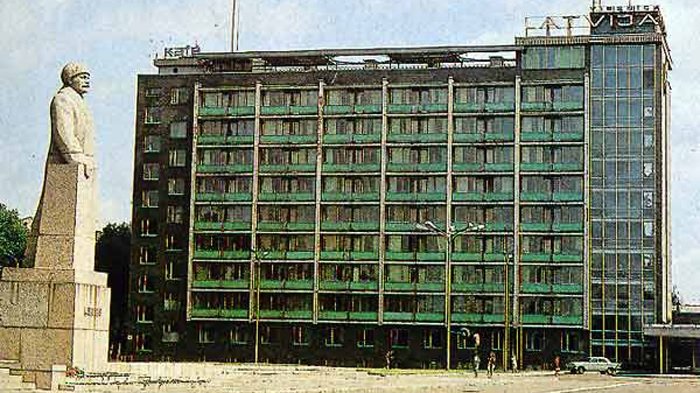
So, Daugavpils was a utopia to Russian communists: a location where a single Soviet nation was almost born. But it was also a dystopia to most Latvians: a reminder of what all Latvia could become, should the Soviet occupation and state-sponsored Russian immigration continue.
Many of those likely left Daugavpils soon afterward, as the city population declined from its peak of 125000 in 1989 to 115000 in 2000.
However, unlike elsewhere in Latvia, Russians retained the majority (54%) and the city remained Russian-speaking, many of its inhabitants refusing to learn Latvian. In independent Latvia where Latvian slowly replaced Russian as lingua franca, this became a hindrance. In addition to direct disadvantages, the Soviet settlers who spoke no Latvian received no citizenship, rendering a third of Daugavpils inhabitants stateless.

Perhaps due to all this Daugavpils became visibly poorer than other Latvian cities in the 1990s and early 2000s, its iconic fortress turned into a kind of tamed slum for the poor people. In the mid-2000s however, as Latvia’s spectacular growth increasingly went beyond Riga, Daugavpils also received modern malls and downtown renovations.
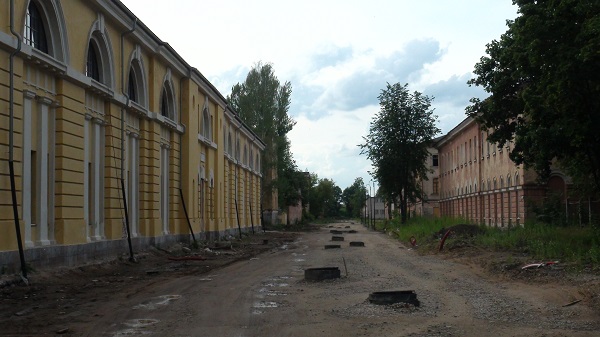
Still, the non-Latvians of Daugavpils grew increasingly disillusioned with independent Latvia, while ethnic Latvians increasingly saw Daugavpils as disloyal. Both facts were epitomized in two referendums when Daugavpils became the sole large Latvia’s city to vote against European Union membership (2003) and for an official status to the Russian language (2012). To many ethnic Latvians this (especially the 2012 proposition) amounted to treason, an attempt to “turn back the time” and “turn Latvia towards Russia”. For the Russian-speaking population of Daugavpils however, modern post-Soviet Russia may often seem to be a much more understandable and culturally acceptable place than either Latvia or the European Union.
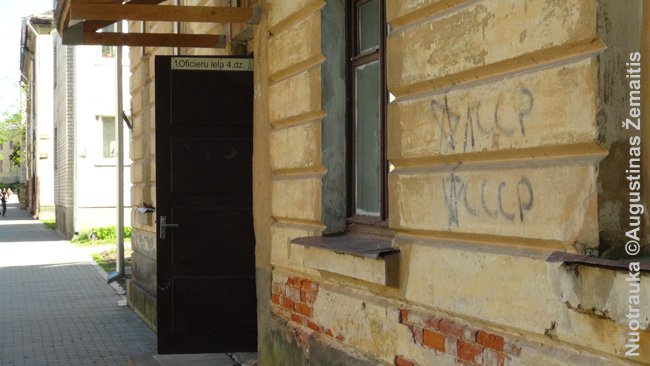
Sights, Cities, History, Culture and more
Explore Daugavpils

Plan Your Trip to Daugavpils: Best of Daugavpils Tourism
Essential daugavpils.

Daugavpils Is Great For
Art & history.

Eat & drink

- Hotel Dinaburg
- Park Hotel Latgola
- HomeLike Hotel
- Biplan Hotel
- Sventes Muiza
- Gubernators
- cat cafe "KOTOFFSKI"
- Gastrobārs Yoggi Bear
- Daugavpils Shot Factory
- Daugavpils Mark Rothko Art Centre
- Latgale Zoological Garden
- Daugavpils Fortress
- Shmakovka Museum
The Top Things To Do And See In Daugavpils, Latvia

Daugavpils is a waterside city in south-eastern Latvia that boasts ruggedly handsome and dramatic landscapes. Rolling hills and captivating fortresses can be found in the area, as well as a wealth of charming red-brick buildings modelled in a German style. This is an underrated, idyllic region of Eastern European that is yet to play host to the hordes of tourists that are attracted to other parts of the Baltic states; here’s our guide to the top things to do and see while here.

Explore the history
The area around Daugavpils has been inhabited for centuries. It was founded by the maurading Muscovite ‘Ivan the Terrible’, who sacked the nearby fortress of Dünaburg to construct a Livonian-style fortress, a site that later flourished into Daugavpils. The town has been an important garrison area for successive rulers ever since, and a walk around the verdant greenery here exposes old castle ramparts and the remains of old fortresses to intrepid adventurers.

The dramatic landscape of Daugavpils actually boasts more Russian roots than Latvian. Mass migration and job shortages following the First World War saw migrant Russian workers setting up homes in the town, a community that was enlargened and expanded over the years until Russian became the most prominent language of the region. Even today, Latvian remains only the second-widest spoken language in the town, with over 90 per cent of local inhabitants speaking Russian as their mother tongue.

Study the architecture
Latvian architecture is a stunning blend of Viennese sophistication and Parisian accurracy. In Daugavpils visitors will see beautifully colored buildings showcasing a pale aesthetic reminiscent of Barcelona, as well as a plethora of red brick, elegant constructs that combine to create one of the most charming architectural landscapes in Europe. A visit here should definitely incorporate a saunter down the main strip to see the bright, towering structures that line the walkway, many of which are attractively restored, sophisticated apartment blocks.

Become a Culture Tripper!
Sign up to our newsletter to save up to 500$ on our unique trips..
See privacy policy .
Go to a Museum
A great way to learn more about Daugvapils’ culture is by visiting the Daugavpils Museum of Regional History and Art. Founded in 1938, the museum is lined with wonderful historical displays, showcasing colorful examples of local costumes. There is also a section on the second floor here dedicated to Mark Rothko, arguably the most famous artistic figure to call Daugvapils his hometown, and the museum houses several reproductions that illuminate the life and works of the abstract artist.


Learn about Mark Rothko
Mark Rothko was one of the most influential painters of the 20th century, and was a founding leader of the abstract expressionist movement. He changed the conception of the canvas and created some 836 paintings, some of which are worth millions today. Although he moved from his native Latvia to the USA when he was 10, the artist always nurtured a connection to his Baltic heritage. Following his overwhelming success, Daugavpils erected a monument in his honor in 2003, a construct designed by Romaulds Gibovskis that incoporates themes from the artist’s oeuvre. To learn more about Mark Rothko, and to view some of his work, take a trip to the Mark Rothko Arts Centre, a multifunctional art, culture and education center dedicated to preserving his memory.

Go to a cathedral
Dominating the high ground just east of the center of Daugavpils is the Orthodox Cathedral of SS Boris and Gleb , a magnificent example of 19th-century Muscovite exuberance. Featuring shiny domes that appear to be impaled on spikes of lilac, the building is one of the most eye-catching and majestic in the city. And it is a historical place, too; it was here where Russian armies marched into town on the feast day of Boris and Gleb in 1656. In honor of their victory the army renamed the cathedral Borisoglebsk, and the religious site has been emblematic of Russian culture ever since.

Go to the citadel
Although the Citadel Cietoksnis is undergoing extensive renovations, it is still a site with a rich history worth engaging with. The building operated as the town center until 1770 when when it was captured by Tsarist Russian authorities and turned into a military stronghold. The citadel was again captured by Napoleanic troops in 1812, and after the Second World War it was turned into an Aviation High School. It is an eerie place, with crumbling walls and a garrison outpost which has survived most of the turbulence of its past. Surrounded by lush greenery, the peeling grey buildings juxtapose with the encompassing nature and illustrate the natural beauty and Soviet history of Daugavpils.

KEEN TO EXPLORE THE WORLD?
Connect with like-minded people on our premium trips curated by local insiders and with care for the world
Since you are here, we would like to share our vision for the future of travel - and the direction Culture Trip is moving in.
Culture Trip launched in 2011 with a simple yet passionate mission: to inspire people to go beyond their boundaries and experience what makes a place, its people and its culture special and meaningful — and this is still in our DNA today. We are proud that, for more than a decade, millions like you have trusted our award-winning recommendations by people who deeply understand what makes certain places and communities so special.
Increasingly we believe the world needs more meaningful, real-life connections between curious travellers keen to explore the world in a more responsible way. That is why we have intensively curated a collection of premium small-group trips as an invitation to meet and connect with new, like-minded people for once-in-a-lifetime experiences in three categories: Culture Trips, Rail Trips and Private Trips. Our Trips are suitable for both solo travelers, couples and friends who want to explore the world together.
Culture Trips are deeply immersive 5 to 16 days itineraries, that combine authentic local experiences, exciting activities and 4-5* accommodation to look forward to at the end of each day. Our Rail Trips are our most planet-friendly itineraries that invite you to take the scenic route, relax whilst getting under the skin of a destination. Our Private Trips are fully tailored itineraries, curated by our Travel Experts specifically for you, your friends or your family.
We know that many of you worry about the environmental impact of travel and are looking for ways of expanding horizons in ways that do minimal harm - and may even bring benefits. We are committed to go as far as possible in curating our trips with care for the planet. That is why all of our trips are flightless in destination, fully carbon offset - and we have ambitious plans to be net zero in the very near future.

Restaurants
The 10 best restaurants in daugavpils, latvia.
- Post ID: 484818
- Sponsored? No
- View Payload
- Daugavpils.lv
Sightseeing
Daugavpils delights the inhabitants and visitors of the city with many cultural and historical objects, such as Daugavpils Fortress, the historical centre of the city, the old wooden buildings in Vecā Forštadte (Old Forstadt) and the Church Hill in Jaunbūve district.
Inseparable treasures of the city, which occupy a large part of the city’s territory, are available for sightseeing and relaxation: forests (1630.5 ha, 7 forest parks) and public waters - 12 lakes (Lielais Stropu; Mazais Stropu; Šūņu; Lielais Trijkārtu; Mazais Trijkārtu, Zirgezers, Plotičku, Stropaka; Gubiščes; Bezdonkas; Torfjankas; Porohovkas); two artificial reservoirs (Esplanādes; Ruģeļu); three ponds (Ruģeļu, Vītolu street, Valkas street), 5 rivers (Daugava, Laucesa, Meļņička; Čornaja; Šūņupe), Stropu canal, Mežciems water spring.
There are many picturesque places in the territory of the city – riverbanks and lakeshores, forests, forming the background of buildings, as well as specially landscaped territories – parks and squares.
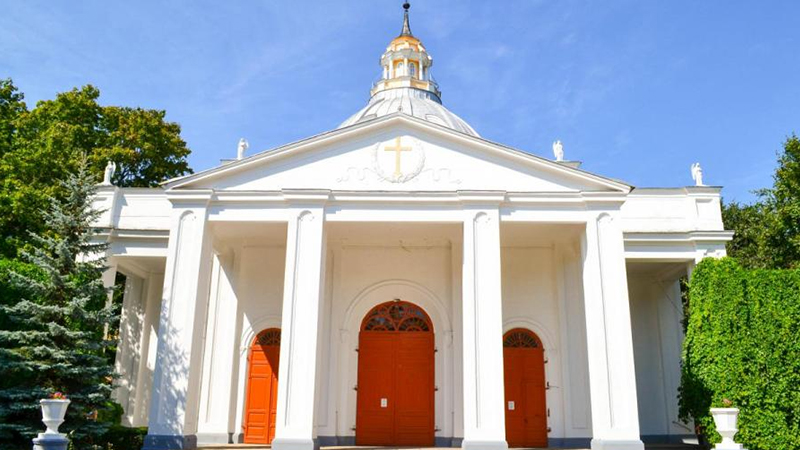
St. Peter’s in Chains Roman Catholic Church
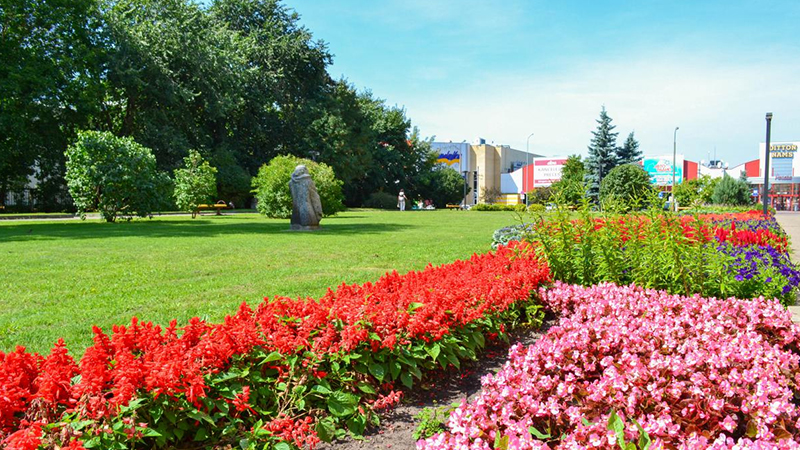
Garden of Sculptures
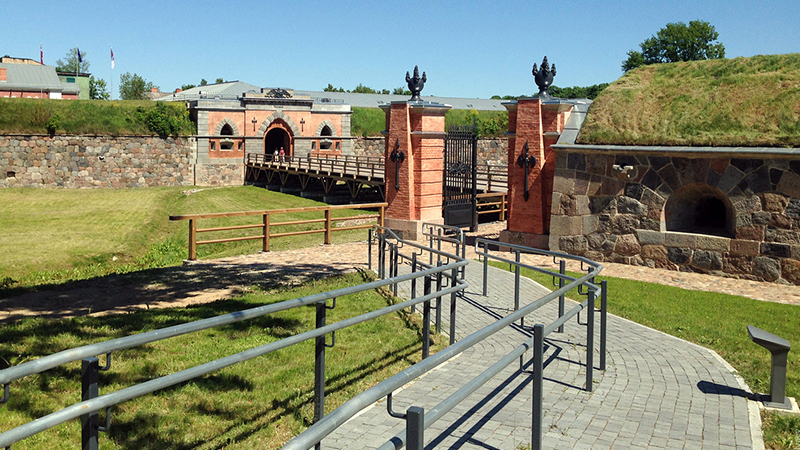
Daugavpils Fortress
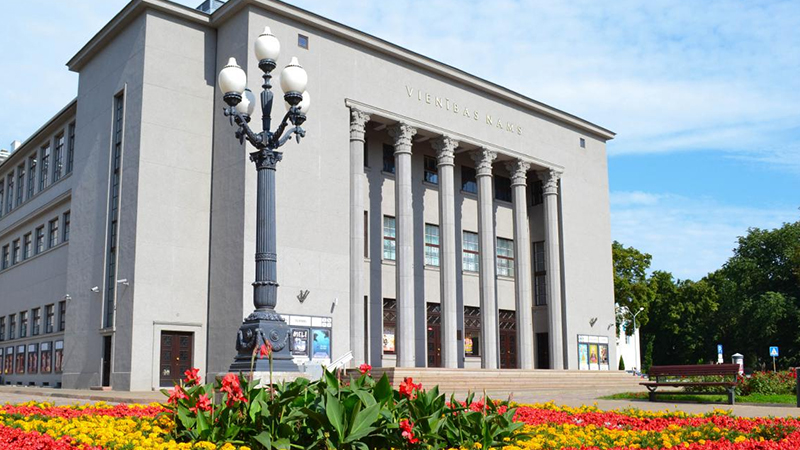
Unity House
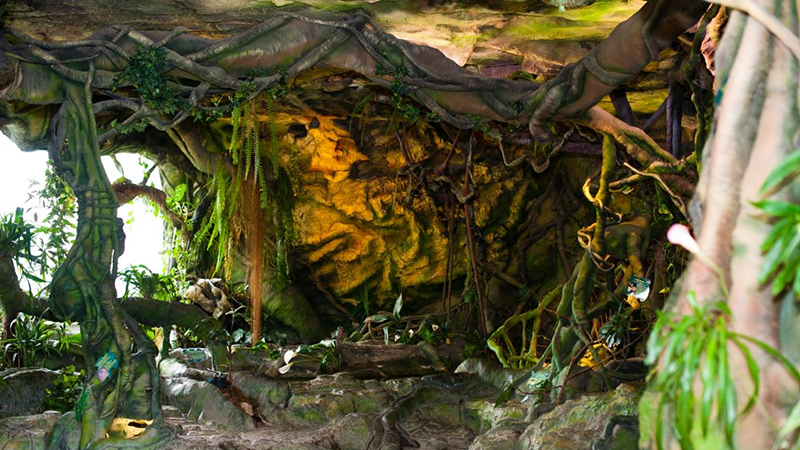
Latgale Zoo
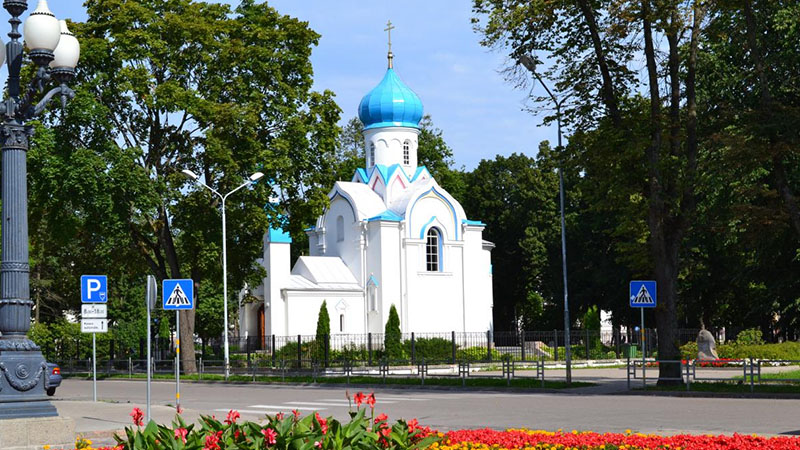
St. Alexander Nevsky Russian Orthodox Chapel
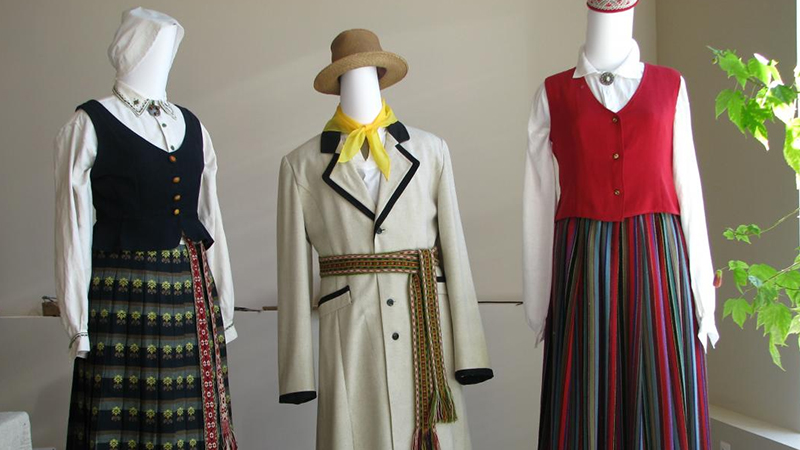
Latvian House
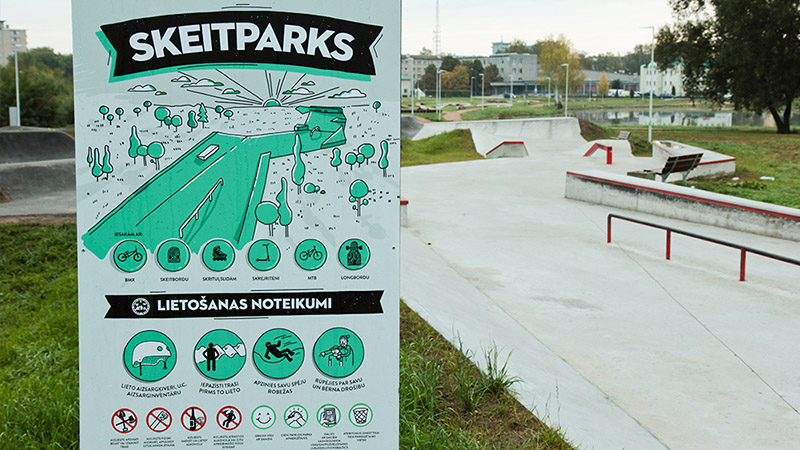
Esplanade Rest Park
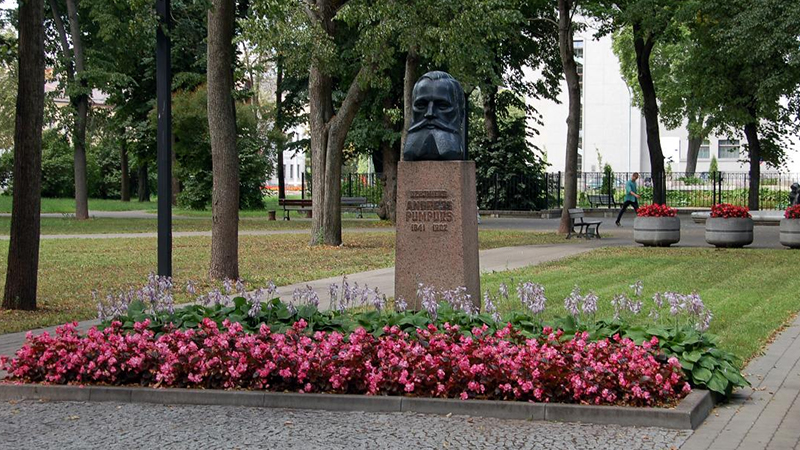
Andrejs Pumpurs Public Garden
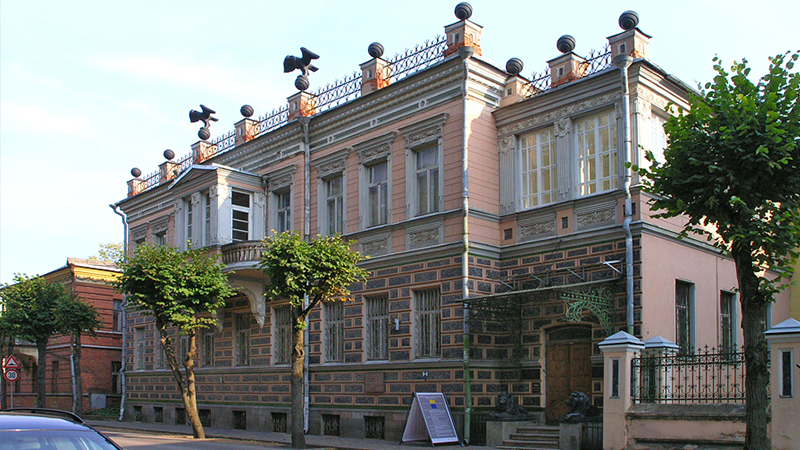
Daugavpils Regional Studies and Art Museum
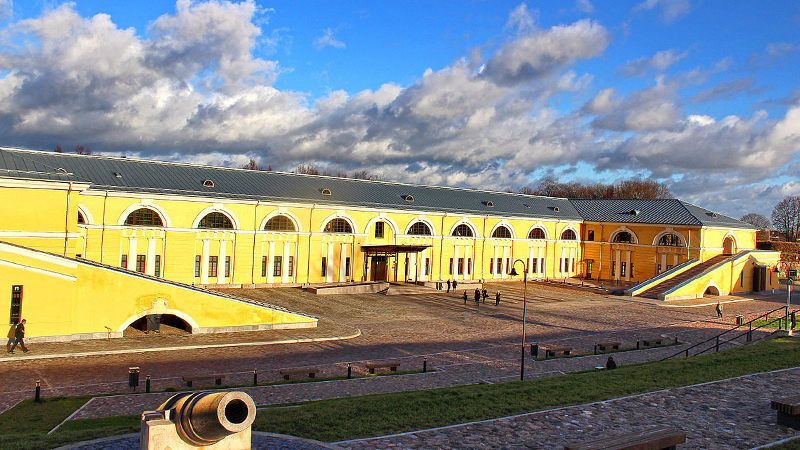
Daugavpils Mark Rothko Art Center
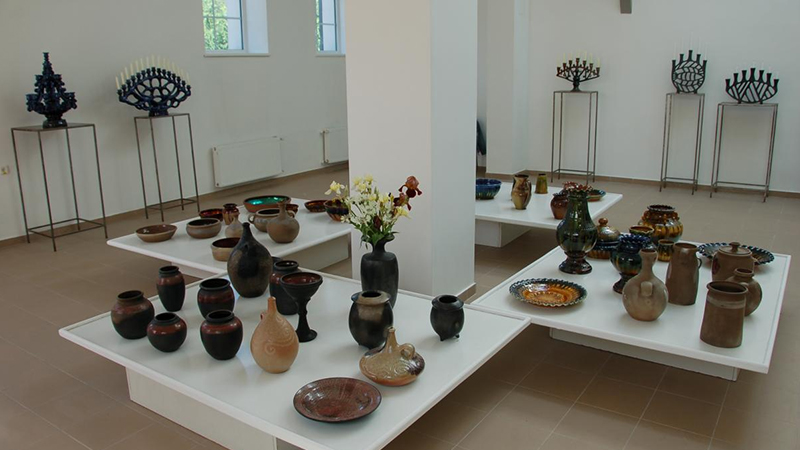
Daugavpils Clay Art Centre
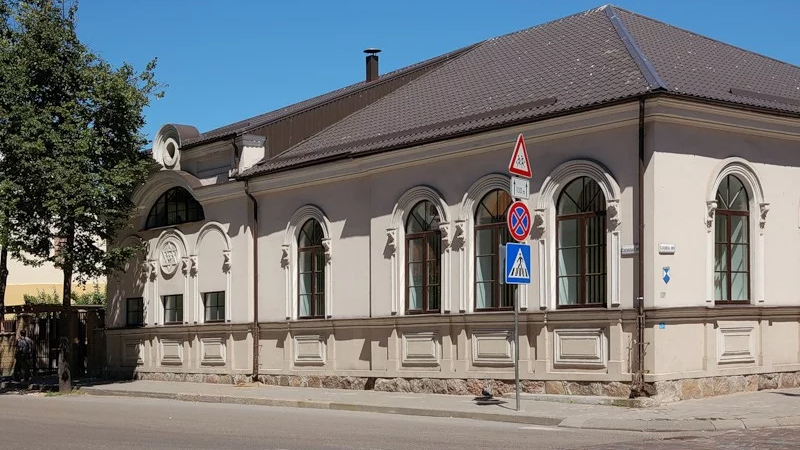
Synagogue and Museum "Jewish of Daugavpils and Latgale"
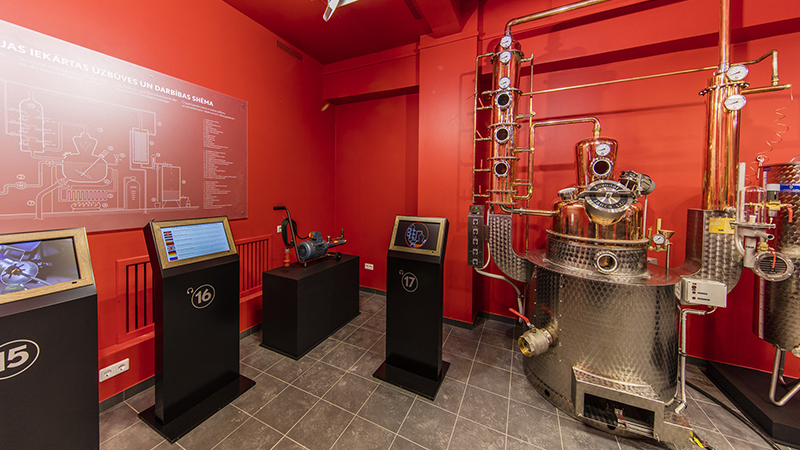
Shmakovka Museum
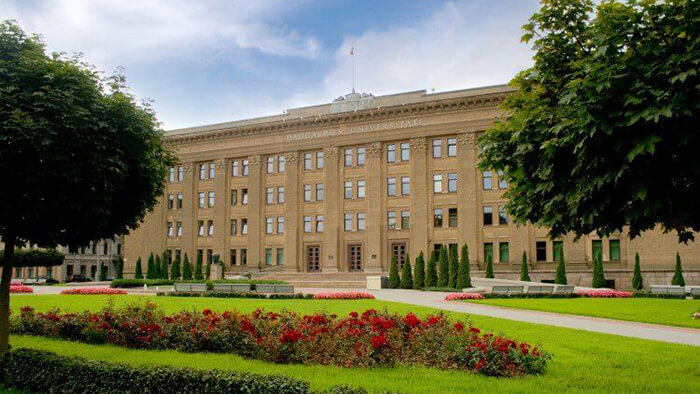
Daugavpils University Public Garden
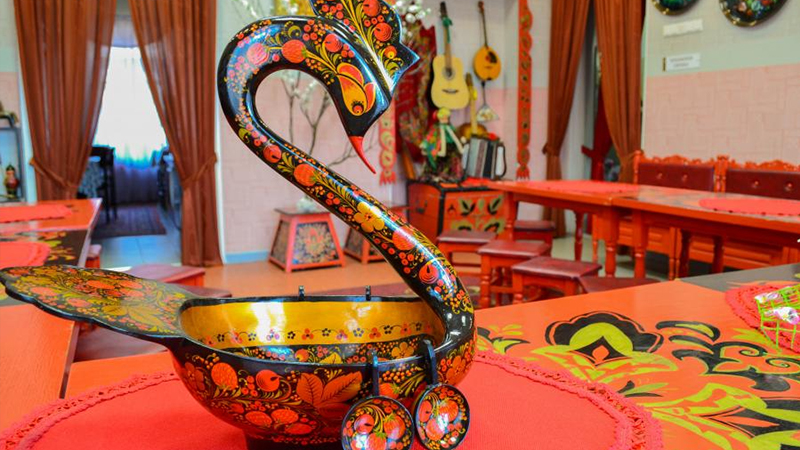
The Centre of Russian Culture (Russian House)
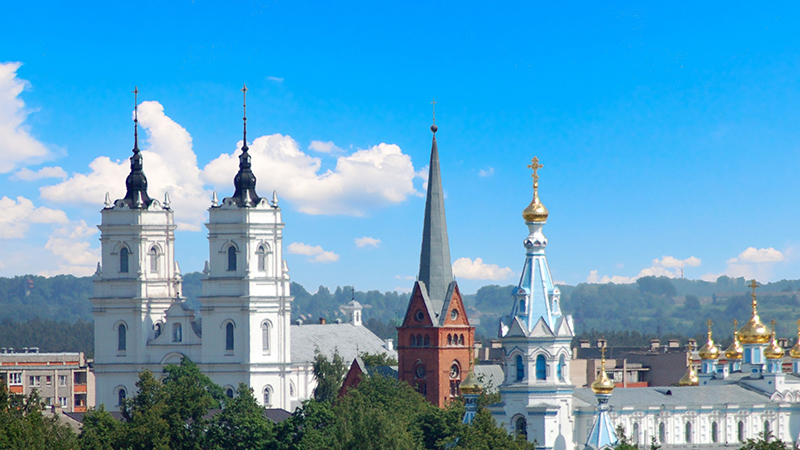
Church Hill
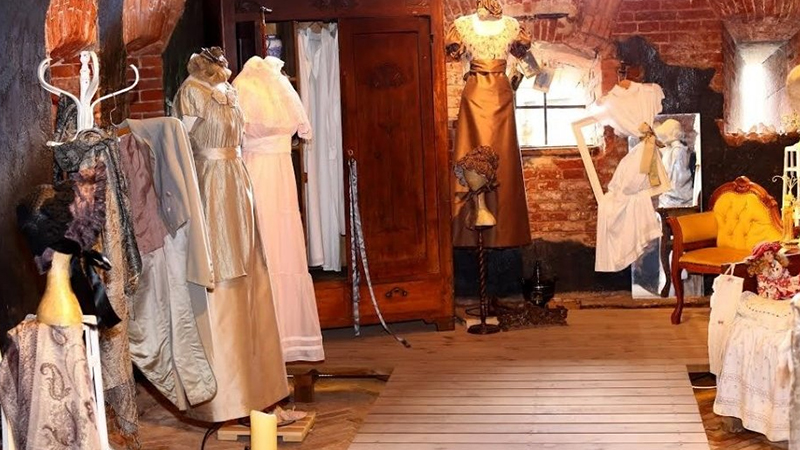
The exposition of historic costumes "The chest of memories"
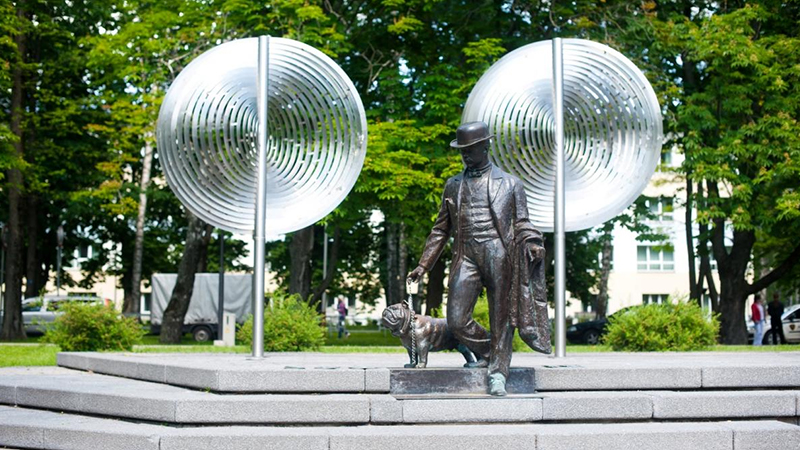
Dubrovin Park
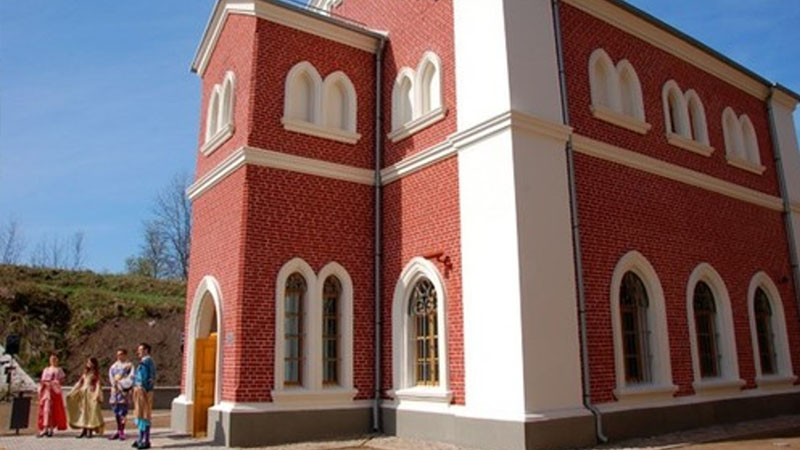
Culture and Information Centre of Daugavpils Fortress
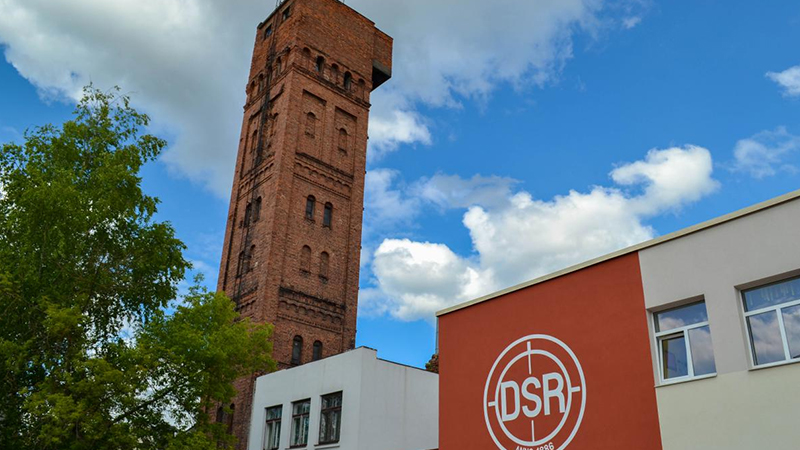
Daugavpils Lead Shot Factory
Name, surname, telephone number or e-mail.
Daugavpils valstspilsētas pašvaldība neuzņemas atbildību par tulkojuma precizitāti!

Daugavpils Tourist Information Centre

Phone: +371 65422818 +371 26444810 E-mail: [email protected] Web: www.visitdaugavpils.lv
Facebook Daugavpils.Travel Augšdaugavas novads.Travel Instagram @daugavpils.travel @augsdaugava.travel YouTube Daugavpils Travel

IMAGES
VIDEO
COMMENTS
PLACES TO VISIT WITH YOUR DOG IN DAUGAVPILS. 06.09.2022. Daugavpils offers a wide range of recreation and leisure opportunities, visits to the city museums, cultural institutions and natural sites during the summer tourist season. Daugavpils is a dog friendly city, so residents and guests of Daugavpils can visit sightseeing with their four ...
Ekskursiju piedāvājums skolēniem Daugavpilī. 09.03.2024. Piedāvājam bērniem un jauniešiem apmeklēt izzinošus un interesantus tūrisma objektus Daugavpilī vai doties izglītojošajā ekskursijā pa Daugavpils cietoksni, apskatīt pilsētas vēsturisko centru, Baznīcu kalnu un citus interesantus objektus. "MĀKSLAS DIENAS '24.
In the case of repost of materials, a hyperlink to the portal visitdaugavpils.lv is required. This website uses cookies that allow to collect information about the visitors. The data received can be accessed by our trusted partners (third party). By continuing to use this site, you agree that we will collect and use cookies in your device.
Daugavpils Olympic Centre. Visitors of the centre can use 25 m swimming pool with 6 lanes, depth 1.35 m - 1.85 m and 12 m x 6 m small swimming pool, depth 0,95 m. For relaxation, the excellent solution is the spa zone which additionally offers the sauna, steam bath and massage baths to combine with a refreshing swim.
DAUGAVPILS. The city, with Dinaburgas Castle at its centre, was founded by the Livonian Order, but it had been ruled over by Poles, Swedes, Russians and Germans. History has left its mark on Daugavpils in its architecture, the diversity of its residents, and its culture. Get to know Daugavpils by visiting these sights!
2. Daugavpils Mark Rothko Art Centre. Daugavpils Mark Rothko Art Centre - multi-functional contemporary art and culture centre located in the Artillery Arsenal building (1833) of Daugavpils Fortress, where history goes hand in hand with the contemporary and creates a unique and inspiring place for creative expression and experience.
Daugava means so much. Daugavpils is rich in waters, rich in languages, culture, denominations, and fates, it is a city where multi-ethnical and multicultural environment has been developed since ancient times. Daugavpils - multicultural, multi-ethnical and multifunctional city, cross-border centre of services and economic development. The aims ...
Excursions to the Daugavpils Fortress. We want you to make the most of your day at Daugavpils Fortress. Let one of our experienced guides bring your visit to the fortress alive. To book an excursion contact the Daugavpils Fortress Visitors Centre on +371 654 24043, +371 28686331, [email protected]. + −.
Daugavpils (pop. 93 000) is Latvia's second largest city and the main metropolis of Latgale (Eastern Latvia). Uniquely, ethnic Latvians make up only 20% of the population here, making the city seem distant and disloyal to many Latvians. Russian is the lingua franca of Daugavpils.
GUIDED TOUR "GET TO KNOW DAUGAVPILS". Date: 25.02.2024. Time: 12:00. Place: Unity Square. If you want to learn more about Daugavpils, the best way to do it is to visit a guided city tour, which will take you through the most important sights and their history. Your guide will tell you interesting and fascinating stories about our city.
In the case of repost of materials, a hyperlink to the portal visitdaugavpils.lv is required. This website uses cookies that allow to collect information about the visitors. The data received can be accessed by our trusted partners (third party). By continuing to use this site, you agree that we will collect and use cookies in your device.
The building is built at the end of the 19th - the beginning of the 20th century. The facade are richly decorated with... 8. Vorstadt Daugavpils. 1. Points of Interest & Landmarks. 9. Catholic Church of St. Peter and Paul. 2.
Dubrovin Park. 36. Parks. Museum Jewish of Daugavpils and Latgale. 6. Speciality Museums. Center of Russian Culture/ Russian House. 4. Points of Interest & Landmarks.
Augsdaugava district is a Latvian municipality, in which Daugavpils district and Ilukstes district were merged on July 1, 2021, after the 2021 administrative territorial reform of Latvia. It is bordered by Jekabpils, Livani and Preilu counties in the north, Kraslava county in the east, Lithuania's Panevezys county in the west and Utena county ...
Dominating the high ground just east of the center of Daugavpils is the Orthodox Cathedral of SS Boris and Gleb, a magnificent example of 19th-century Muscovite exuberance. Featuring shiny domes that appear to be impaled on spikes of lilac, the building is one of the most eye-catching and majestic in the city. And it is a historical place, too ...
The historical tourist route "From Kaunas to Daugavpils along the old postal route" invites you to travel along the old postal road that connected Daugavpils and Kaunas. This route connects the second largest cities in Latvia and Lithuania with two hundred kilometers of history, adventure and discovery. The route includes cities in Latvia ...
Sightseeing. Information has been updated at 18.09.2018, 16:29. Daugavpils delights the inhabitants and visitors of the city with many cultural and historical objects, such as Daugavpils Fortress, the historical centre of the city, the old wooden buildings in Vecā Forštadte (Old Forstadt) and the Church Hill in Jaunbūve district. Inseparable ...
Daugavpils.Travel, Daugavpils. 6,130 likes · 341 talking about this · 443 were here. www.visitdaugavpils.lv
Travel time - 45 minutes. Zarasi - Daugavpils. By A6, E262 roads. Travel time - 30 minutes. By train. From Riga railway station. Travel time - 3-3.5 hours. From Vilnius railway station. Travel time - 2 hours 40 minutes.
Daugavpils Tourist Information Centre Opening hours: Monday - Sunday 10.00 - 18.00 Phone: +371 65422818 +371 26444810 E-mail: [email protected] Web: www.visitdaugavpils.lv Facebook Daugavpils.Travel Augšdaugavas novads.Travel Instagram @daugavpils.travel @augsdaugava.travel YouTube Daugavpils Travel